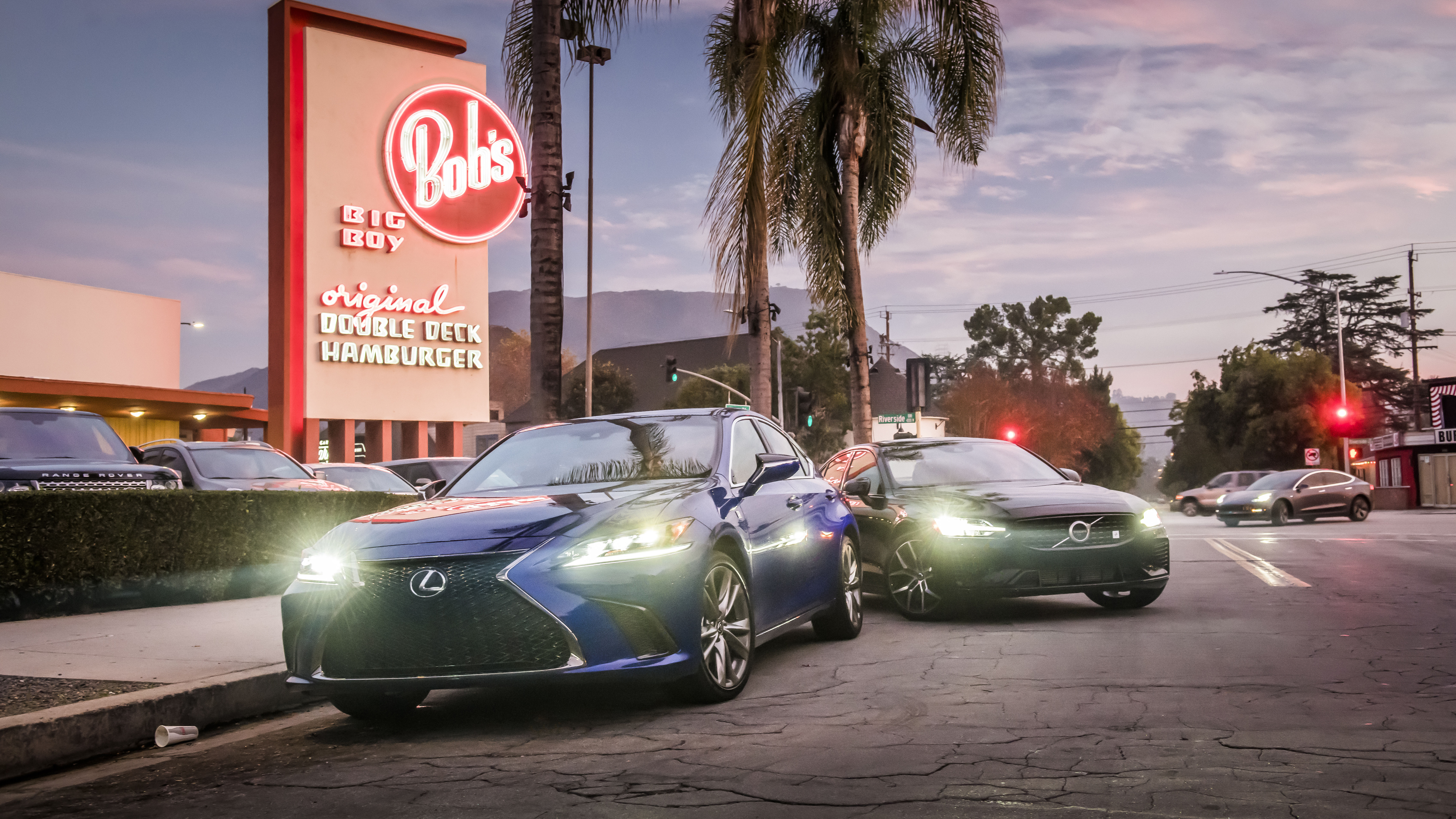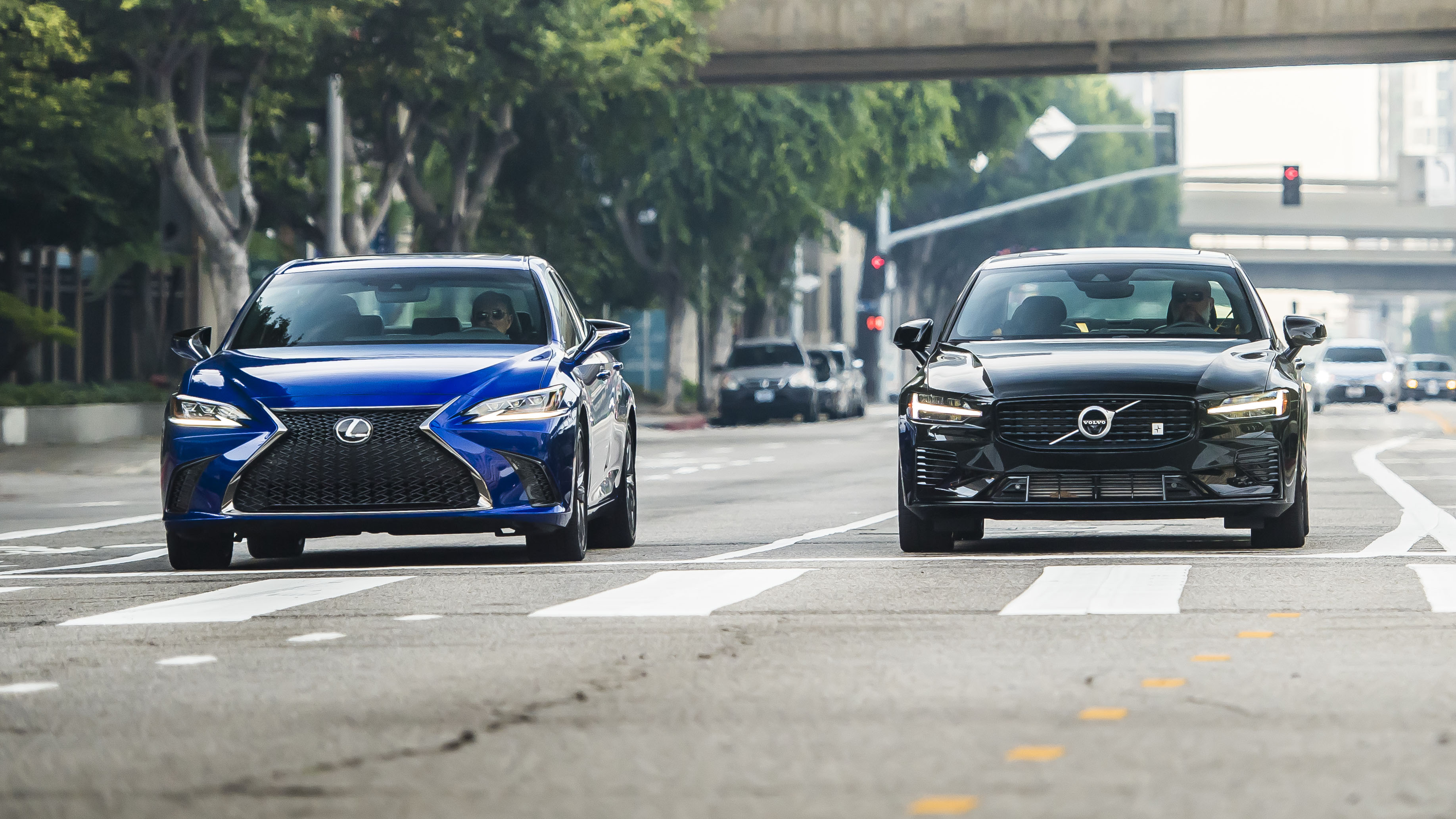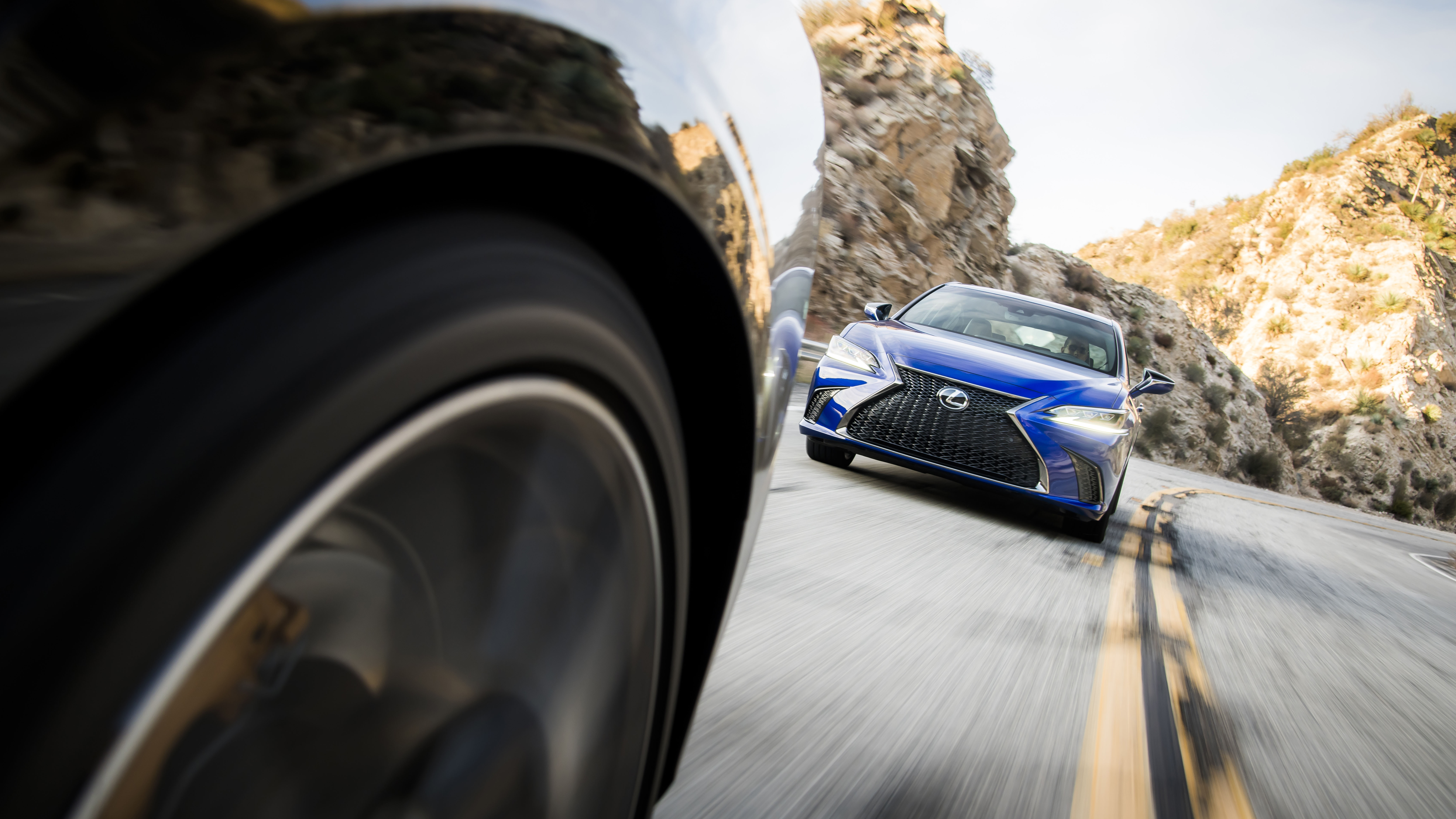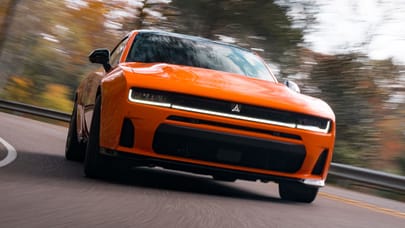
US twin test: Lexus ES vs Volvo S60
Can sedans - saloons - still cut it in today's age of crossovers and SUVs?
Sedans? If you believe everything you hear these days, you’d think that the US had abandoned them completely. SUVs, crossovers and trucks, that’s what America wants. Not four door, three-box passenger cars.
And, in this Trump reign of extra tax threats on foreign goods, surely European and Asian-produced sedans are faring even worse? Who wants a supposedly unwanted stepchild of the auto industry with a higher than average price tag?
Answer – around a million people a year. Yes, of course there’s a huge move to SUVs and the like, as those make up a huge majority of the 17 million vehicles sold in the US each year. But still close to four million people a year in the US buy a sedan, and a quarter of those choose luxury models.
A large majority of those premium cars are imported brands now built here in the US in transplant factories. And, after a few teething problems, such as the original Mercedes Benz MLs, the quality of the cars produced here is on par – or better – than those produced in the motherlands of the brands.
Or are they? We decided to pluck two of the latest import sedans and give them the once over. Not just to see if they pass quality and brand muster, but also to see how a modern sedan handles the gridlock and the open mountain canyons of Los Angeles.
Can they be functional and comfortable doing traffic battle against the wall of SUVs in the city, yet still possessed of enough sedan performance and handling to be fun when the road opens out?
The first pick was the Lexus ES350 F Sport, the most popular large luxury sedan in the US after the all conquering Teslas, selling almost 50,000 a year. This has been a stable sidekick to the larger LS for seven generations, since the two cars were launched here in 1989. The first five generations were built in Japan on the Camry platform, the sixth, in its move upmarket, switching to a mix of Camry platform and Avalon componentry.
That sixth-gen car also heralded the ES’s initial production run in the US in 2015, at the firm’s Georgetown, Kentucky factory. The hybrid and in-line four cylinder cars were – and are – still made in Japan and imported to the US, Kentucky concentrating on squeezing out the ES350 V6 models.
Production of the seventh-gen ES is again split between the hybrids and in-line fours in Japan and the V6 gas-only ES350 models in the South US. The Kentucky factory was awarded JD Power’s gold award for being the best quality factory in the US – not for imported brands, any brand. So there’s no indication that this 2019 model we have here is going to have any quality issues.
Against that backdrop the Volvo S60 T8 hybrid lining up alongside the Lexus, comes from a complete unknown, a brand new plant in Charleston, South Carolina. This has been conceived and built to produce from autumn 2018 the new SPA-platformed S60 – and later, in 2021, the next generation XC90 SUV – not just for the US but the rest of the world, too.
Looking for more from the USA?
Top Gear
Newsletter
Thank you for subscribing to our newsletter. Look out for your regular round-up of news, reviews and offers in your inbox.
Get all the latest news, reviews and exclusives, direct to your inbox.
This facility’s abilities – and the cars it produces – are key to Volvo’s future. Unlike Lexus which houses its hybrid expertise in Japan and exports the cars from there, Volvo will be building all variants of the S60 right there in the Palmetto State.
We are extra interested in the quality of the hybrid drivetrain, not least because Volvo says that 100 per cent of new Volvo models launched from 2019 onwards will have an electric motor. So, as a flag waver for that new generation, we are intrigued to see how this first example drives.
And how it might sell. The highest annual tally the last model S60 sold in the last ten years was less than half what the stalwart ES manages to shift every year. In 2018 Volvo sold a mere seven thousand of the previous-gen car. So it’s all to play for as the new US plant can produce up to 150,000 units a year.
In terms of spec, the two cars line up like this. The loaded 305bhp front wheel driven ES350 F Sport tips the financial scales at just over $53k while the 415bhp AWD hybrid Volvo T8 Polestar Engineered, boasting Polestar performance brakes and Ohlins suspension, is about $4k more. That might not look like a hugely fair comparison on paper, but this is not a head-to-head roadtest, more a review of an established and new entrant to the luxury sedan transplant market. Still, let’s see what happens.
Starting with the S60, it looks and feels immediately Scandinavian, like a stroll down a Gothenburg side street. The heated and cooled seats have the familiar Volvo hug, the Sensus display is simple and functional. And the Bowers and Wilkins surround sound system make the interior of a car sound like you’re sitting in the middle of a glacier. So far, so good.
Being a plug-in hybrid, it surfs away calmly on electric only power and everything feels just so. The switch to hybrid power is not the smoothest, there being a perceptible change in progress as the 2.0-litre turbo- and supercharged engine chimes in. But that is nothing compared with the brakes.
There is such a huge step off between the regenerative brakes and the (vast) Polestar discs that it’s nigh on impossible to slow the car evenly. One second you are slowing gently then, a tiny increase in pedal pressure brings an enormous rush of extra retardation that throws you forward and threatens to embed following traffic in your rear fender.
The default social expectation that your next ride will be a crossover or an SUV is clearly wrong
In stop-start LA traffic – which comprised 50 per cent of this test – this makes the T8 a real chore to drive smoothly and safely. Volvo swears the problem is purely down to the car being a pre-production model. A non-hybrid T6 model they supplied after this test was indeed a lot better.
But T8 buyers beware. If your car brakes anything like this one, we’d be tempted to hand it back. Volvo has sold every one of the 23 they plan to sell in 2019, so they will have to fix, not replace, any cars. It’s also worth noting at this point that we experienced a similar issue, though not as pronounced, probably due to the SUV’s greater weight damping out the effects, in an XC90 T8 in Europe last year. Just saying…
Hoping that the T8’s Ohlins dampers, bigger wheels and 415bhp would be more at home on the open canyon roads above LA, we headed out of town to see how it could string some corners together. Unfortunately, rather than getting better, we all agreed that the car got worse the faster we tried to push it.
Volvo’s handling in recent years, especially with the Polestar add-ons, has moved away from the intentional no-fun, early understeer set-up towards a more neutral platform in which both the steering wheel and throttle can be used to change the car’s attitude. But not on this T8, which just tied itself in knots when asked to combine brakes or throttle with the dead steering input. The net result being an unenjoyable drive.
There are just so many systems at work here, all of which feel like they are working in isolation, not in harmony with the others. You’ve got the electric motor, the turbocharged and supercharged gas engine, the regen brakes, the disc brakes, and the chassis settings all responding to each other like they’ve never met before. So it’s like a rolling automotive argument which the driver has to referee. It’s clearly too much for the existing algorithms, that’s for sure.
Again, the company gave us a non-hybrid T6 to drive after our time with the T8, to show us that all the issues were pre production and software, not hardware, based. And it was indeed a good deal better, more linear, more fun to drive. But the poor memories of the T8 remain. Until we drive a full production T8 model and it absolves itself, we couldn’t recommend anything above the T6 in the S60 range.
After all that unexpected upset in the Volvo, the Lexus ES was a relative Koi pond of Japanese calm with surprisingly sharp – in a good way – responses. Like the S60, once installed behind the wheel, there really is no question from where this car’s design started life.
Vast, crystal clear screens, near silent engine operation – we tried to start it more than once only to find it was already running – and a properly quirky infotainment system (it still has a CD player!) unlike anything else on the market, give a window into Japan’s ferociously and resolutely different culture.
As a place to sit in traffic, it works perfectly. The almost Zen-like interior calm, helped by the V6’s super isolation and acoustic glass, shuts out the outside world and leaves you calm, ready to react. And when you need to, the car reacts quickly, faithfully. Nothing spectacular. Just smooth, easy responses that make journeys and traffic angst melt away.
While that, and a front-wheel drive drivetrain, do not bode well for the fun section of this drive, up on the Angeles Crest, we were quite surprised to discover that, when asked, the ES was more than capable of keeping up with the Volvo. All while using at least 50 per cent less effort and with 100 per cent more satisfaction. It’s not up there with the vastly underrated – and soon to be discontinued – rear driven GS F. But it definitely shares some of the same LC500 DNA of providing satisfyingly linear responses, albeit at lower speeds.
So much so, all four people who drove both cars said they would prefer the ES sedan over the Volvo T8. Which is as much about how bad the Volvo was. None of them other than me had a later go in the T6, which was way better sorted than the T8. But, if I was pressed on the day, I’d have taken the understated Lexus over the Volvo, too, despite the Swede’s undeniably greater kerb appeal and major on-paper advantages.
In fairness to the US’s latest transplant, Volvo says we should wait until we have driven a full production version of the T8 before passing any more judgement on it. They say software fixes are on the way, so let’s give them the benefit of the doubt. For now.
It won’t make any difference to 2019 sales – as previously mentioned, T8 production is sold out this year – but it does show how tricky it is to get the product right straight away. If they need any help they should take a short drive over to Kentucky – or take a flight over to Lexus’s hybrid centre in Japan – to see how it’s done properly. With hybrids being a major staple of the future Volvo – and Polestar – line ups, it’s something that needs urgent attention.
What also needs a second look is people’s choice of vehicle. The almost default social expectation that your next ride will be a crossover or an SUV, and that all sedans are good for nothing other than Uber, is clearly wrong.
If you actually need the extra space or off-road performance of a crossover or SUV, fine. But if you are just slavishly buying one because your neighbours have one, think again. A sedan is still the best, most comfortable, economical, fun way to transport four people. If you haven’t tried one for a while, give it a go - we know you’ll like it. Just steer clear of the T8 for now…
Trending this week
- Car Review
BMW 1 Series










